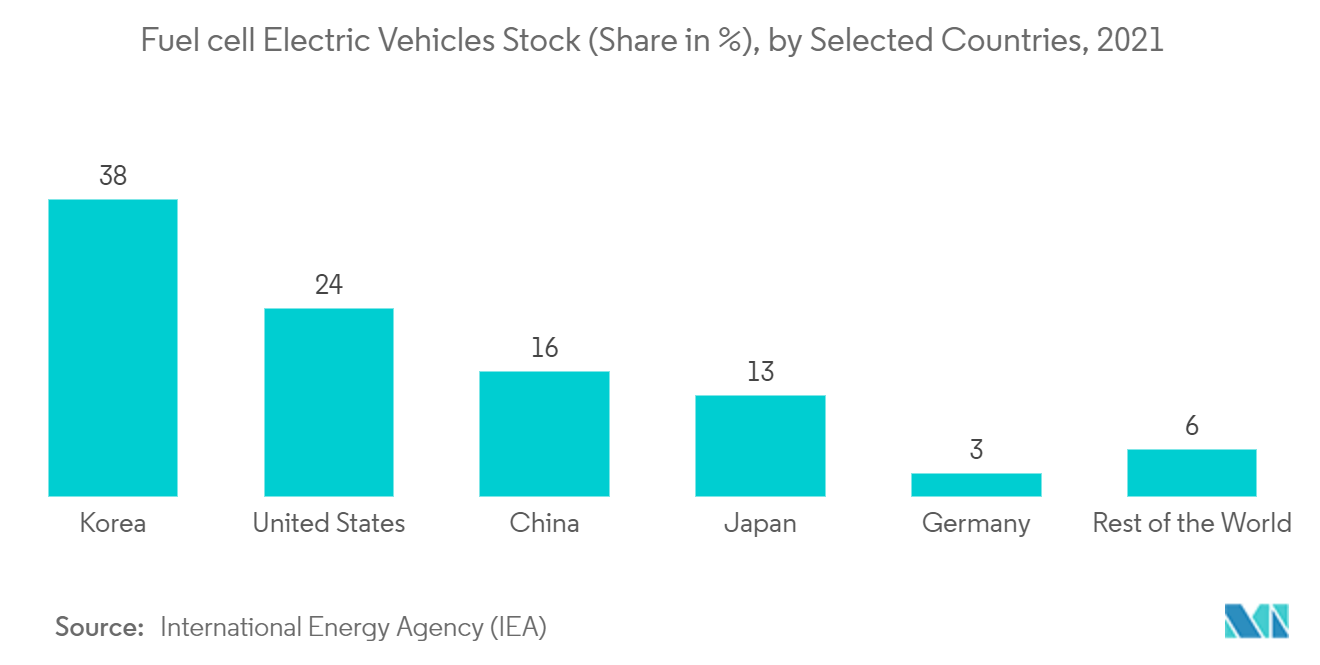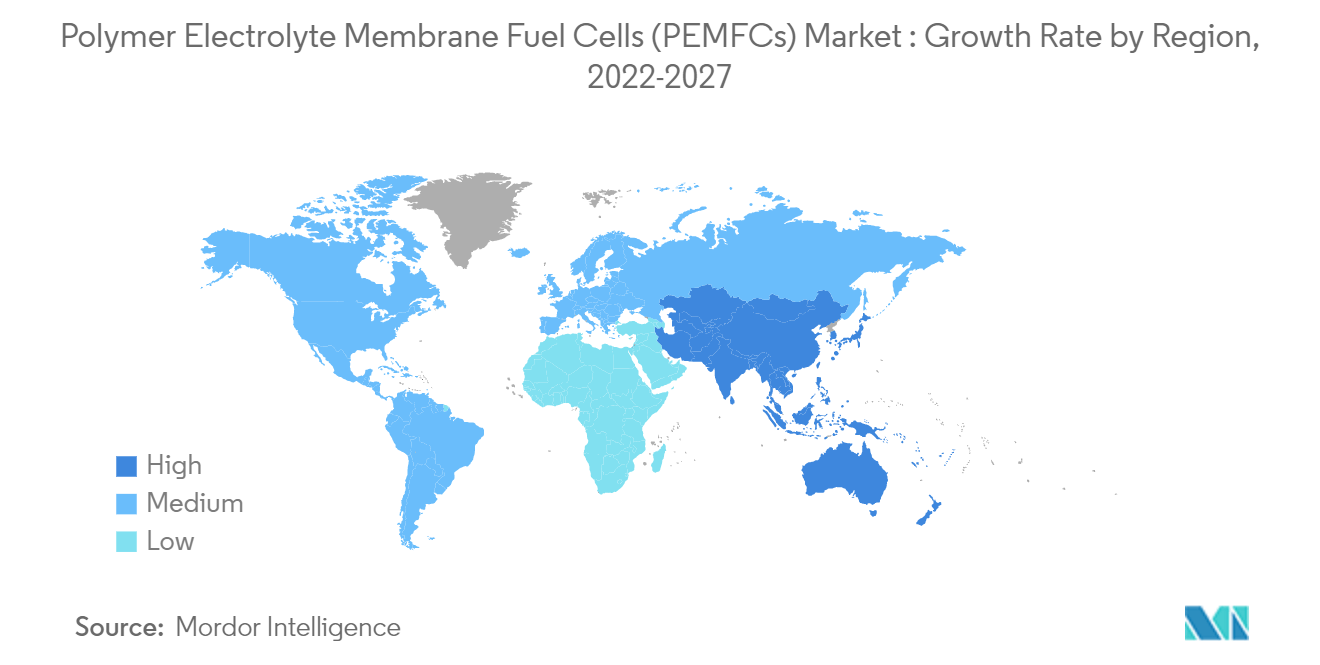Market Trends of Polymer Electrolyte Membrane Fuel Cells (PEMFCs) Industry
This section covers the major market trends shaping the Polymer Electrolyte Membrane Fuel Cells Market according to our research experts:
Government Initiatives and Growing Private Investments are Expected to Drive the Market
- The PEM fuel cell market witnessed significant growth in the last two years, mainly due to the introduction of government initiatives in key markets and increasing investment support from the private sector.
- The Californian Energy Commission's Alternative and Renewable Fuel and Vehicle Technology Program, a government initiative in 2013, established long-term authority to co-fund the first 100 retail hydrogen stations. This encouraged the private sector to invest in the fuel cell market.
- The Californian Fuel Cell Partnership aims for a network of 1,000 hydrogen stations and a fuel cell vehicle population of up to 1,000,000 vehicles by 2030. The target reflects the input and consensus of more than 40 partners, including fuel cell technology companies, automakers, energy companies, government agencies and non-governmental organizations, and universities.
- In February 2022, a project showed that high-temperature polymer electrolyte membrane fuel cells (HT-PEMFCs) offer an attractive solution to electrify heavy-duty vehicles and other large-scale mobility applications due to effective heat rejection.
- Moreover, multiple institutions, including LANL (Katie Lim), Sandia National Labs (Cy Fujimoto), Korea Institute of Science and Technology (Jiyoon Jung), University of New Mexico (Ivana Gonzales), University of Connecticut (Jasna Jankovic), and Toyota Research Institute of North America (Zhendong Hu and Hongfei Jia) were involved in this project.
- Among fuel cells, the PEM type is the most popular one. It is expected to play a crucial role in Europe's target for fuel cell deployment and drive the PEM fuel cells market.
- In February 2022, scientists of the Los Alamos National Laboratory developed a new polymer fuel cell that operates at higher temperatures. The long-standing issue of overheating, one of the biggest technical obstacles to using medium- and heavy-duty fuel cells in vehicles, such as trucks and buses, was resolved by a new high-temperature polymer fuel cell that operates at 80-160 degrees Celsius and has a higher rated power density than cutting-edge fuel cells.
- Furthermore, there is a rise in fuel cell-based vehicle demand worldwide. North Korea and the United States are the leading countries in the world in terms of stock of fuel cell-based vehicles. In 2021, North Korea and the United States had 38% and 24% of world fuel cell-based vehicle stock, respectively.
- Hence, such government initiatives and investments are likely to propel the market during the forecast period. Therefore, owing to the abovementioned factors, government initiatives and growing private investments in PEMFC technology are expected to drive the market during the forecast period.

The Asia-Pacific is Expected to Dominate the Market
- The Asia-Pacific is one of the promising regional markets for polymer electrolyte membrane fuel cells due to favorable government policies for clean energy usage in countries such as China, Japan, and South Korea.
- China is considered to have the highest potential for PEMFC as the hydrogen fuel cell industry in the country has been gaining traction on the back of favorable national and provincial government subsidies and incentive programs from local authorities, mainly to encourage the uptake of hydrogen vehicles to cut pollution.
- Along with the potentially large market, China has numerous domestic enterprises that manufacture PEMFC. Hence, the country's demand and domestic supply are present, further bolstering the growth of the market. Moreover, Chinese companies seek to build their electrolyzer manufacturing capacity to 1.5-2.5 GW in 2022 to supply domestic and overseas markets.
- Meanwhile, China has plans to manufacture 100,000 to 200,000 tonnes of renewable hydrogen annually and have a fleet of 50,000 hydrogen-fueled vehicles by 2025. China is currently the world's largest market for fuel-cell trucks and buses and the third-largest for fuel-cell electric vehicles (FCEVs).
- Recently, Indian Scientists have indigenously developed platinum-based electrocatalysts for fuel cells through an efficient procedure. This electrocatalyst showed comparable properties to the commercially available electrocatalyst and could enhance the lifetime of the fuel cell stack performance.
- Therefore, owing to the abovementioned factors, the Asia-Pacific is expected to dominate the market during the forecast period.

